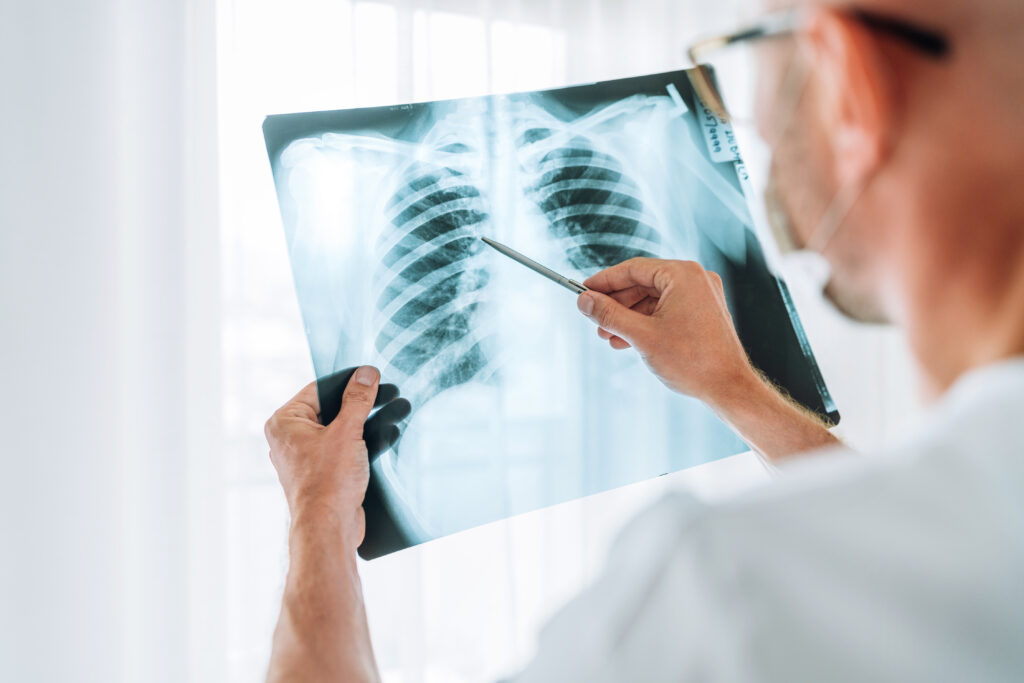West Virginia’s coal mining communities face an ongoing public health crisis as pneumoconiosis, better known as black lung, affects miners of all ages.
For decades, the nation’s top health officials have urged the Mine Safety and Health Administration (MSHA), the federal agency in charge of mine safety, to adopt strict rules protecting miners from rock dust.
In recent years, the problem has only grown as miners dig through more rock layers to get to less accessible coal, generating deadly silica dust in the process.
Rebecca Shelton, the director of policy at the Appalachian Citizens Law Center, said an MSHA inspector would visit a mine quarterly to take an air sample to test for silica dust.
According to Shelton, those measurements are not taken regularly enough, and she and other experts are unhappy with the current rule, which allows miners to be exposed to silica dust at 100 micrograms per cubic meter of air for an eight-hour shift.
“That 100 microgram standard is not one that’s supported by organizations or entities; other health institutions like the National Institute of Occupational Safety and Health (NIOSH), they for many decades have recommended an exposure level that’s half of that,” Shelton said. “So we’ve known for a long time that this exposure level is too high.”
On July 13, MSHA proposed a rule that would cut the current limit for silica exposure in half, down to 50 micrograms per cubic meter of air for an eight-hour shift. That level matches the standard set by the Occupational Safety and Health Administration.
The new rule would also set up new protocols for sampling and monitoring silica dust exposure levels.
“For example, it now asks that coal operators do some amount of sampling for silica dust. Our understanding is that the agency would still continue its quarterly sampling for silica dust,” Shelton said. “If there are samples that are returned over that 50 micrograms limit, that permissible exposure limit, they will require the operators and mine operators to take corrective actions to reduce that limit.”
However, after decades of inaction, miners and advocates worry about the government following through on these rules. In addition, they don’t think the rule does enough to protect miners.
“One, we feel uncomfortable with the amount of lives that this rule is projected to affect because it’s not many,” Shelton said. “The analyses in the rule actually project that fewer than 100 coal miners’ lives will be saved, while hundreds continue to get sick.”
A public comment period on the new rule was extended to Sept. 11 to allow additional time to develop and submit comments on the proposal.
“It’s quite a variety of folks who have participated in this comment: former miners, organizations like ours who care about the health of miners, and also the industry has participated as well,” Shelton said. “So a lot of public health officials, doctors, a lot of folks who are directly involved in and have been directly involved in treating miners who have been ill with this black lung disease.”
More than 5,200 individuals signed onto a petition created by Appalachian Voices and Appalachian Citizens’ Law Center backing a stronger rule.
Several desired changes to the rule were consistent throughout the comment process. Commenters want the rule enforced on a more frequent basis and for routine sampling to be performed by MSHA, not coal operators.
“One of the things that we care a lot about is enforcing this new exposure limit based on more frequent and routine sampling conducted by the Mine Safety and Health Administration, and not relying on coal operators sampling, especially because the sampling technology that they have proposed in the rule is an old sampling technology that is easily manipulable by operators in order to try to reduce what that sample returns,” Shelton said.
Commenters also asked for stronger criteria for citations and to provide clear penalties for those violating the rule.
“We do think that the rule needs to have more specificity around the criteria for issuing citations, and penalizing operators who violate the rule,” Shelton said. “The requirements or the process for issuing citations, or what will trigger a citation is not clear in the rule.”
Advocates for miners with black lung also asked that the new rule include provisions to temporarily shut down mines in violation of silica dust limits, rather than allowing them to stay open and rely on miners to use respirators.
“We do not think that it is a bad thing to have respirators and extra protection on hand. We think that absolutely should be the case, but if and when a mine has depth levels that are over that safe exposure limit, we think that production should be shut down and that miners should be withdrawn until corrective actions can take place so that the ventilation plans, the engineering controls, are adequate to reduce dust levels back down to a safer level,” Shelton said.
Lastly, commenters, advocates and miners asked for the rule to phase in better sampling technology.
“Rather than grounding the rule or having the rule rely on the current sampling technology that’s available, that there will be technology-forcing, and that it will adopt better technology as it becomes available,” Shelton said. “We know that these kinds of regulations and rules can produce the demand for better technology. And so we really want to see that change.”
Appalachia Health News is a project of West Virginia Public Broadcasting with support from Charleston Area Medical Center and Marshall Health.






















 Soloviova Liudmyla/Adobe Stock
Soloviova Liudmyla/Adobe Stock
